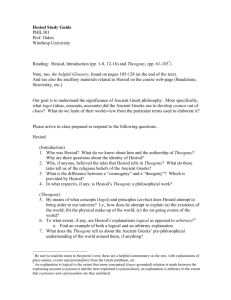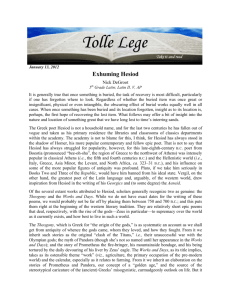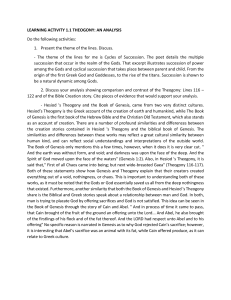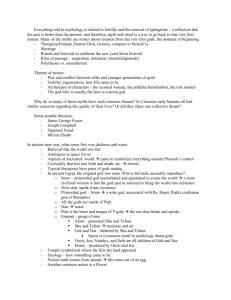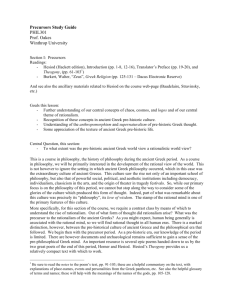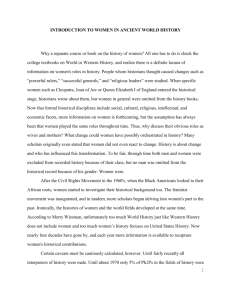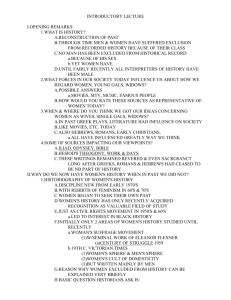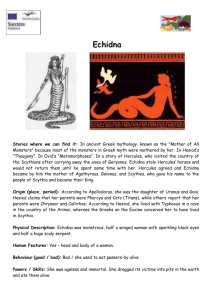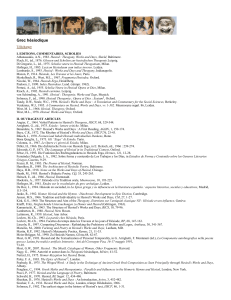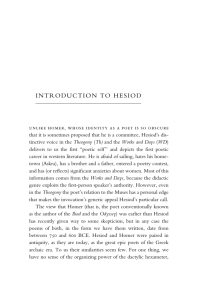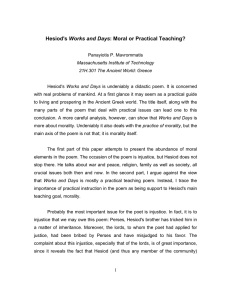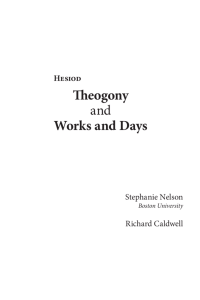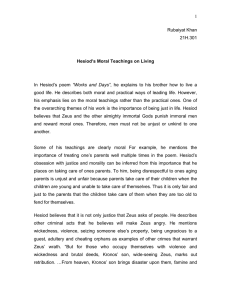Hesiod Reading Guide - Winthrop University
advertisement
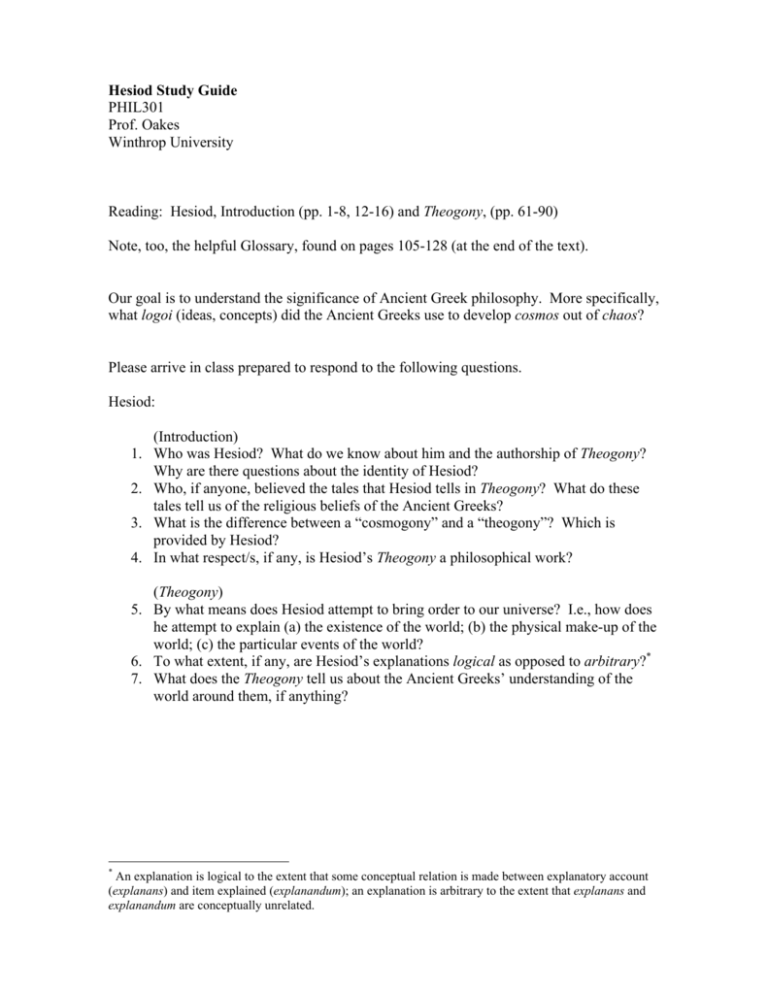
Hesiod Study Guide PHIL301 Prof. Oakes Winthrop University Reading: Hesiod, Introduction (pp. 1-8, 12-16) and Theogony, (pp. 61-90) Note, too, the helpful Glossary, found on pages 105-128 (at the end of the text). Our goal is to understand the significance of Ancient Greek philosophy. More specifically, what logoi (ideas, concepts) did the Ancient Greeks use to develop cosmos out of chaos? Please arrive in class prepared to respond to the following questions. Hesiod: 1. 2. 3. 4. (Introduction) Who was Hesiod? What do we know about him and the authorship of Theogony? Why are there questions about the identity of Hesiod? Who, if anyone, believed the tales that Hesiod tells in Theogony? What do these tales tell us of the religious beliefs of the Ancient Greeks? What is the difference between a “cosmogony” and a “theogony”? Which is provided by Hesiod? In what respect/s, if any, is Hesiod’s Theogony a philosophical work? (Theogony) 5. By what means does Hesiod attempt to bring order to our universe? I.e., how does he attempt to explain (a) the existence of the world; (b) the physical make-up of the world; (c) the particular events of the world? 6. To what extent, if any, are Hesiod’s explanations logical as opposed to arbitrary?* 7. What does the Theogony tell us about the Ancient Greeks’ understanding of the world around them, if anything? * An explanation is logical to the extent that some conceptual relation is made between explanatory account (explanans) and item explained (explanandum); an explanation is arbitrary to the extent that explanans and explanandum are conceptually unrelated.
